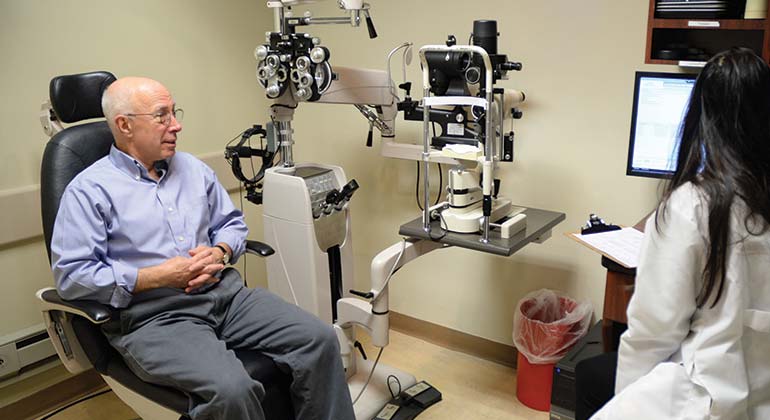
Cornea Diseases Treatments
New York Eye and Ear Infirmary of Mount Sinai’s staff of surgeons, ophthalmologists, technicians, and support personnel bring an unsurpassed level of experience and training to the treatment of a vast range of corneal diseases and conditions.
These treatments include cataract surgery and refractive lens exchange procedures using the latest laser assisted technology and a wide array of intraocular lenses (IOLs). NYEE is one of the nation's most advanced and busiest facilities for corneal transplantation, routinely performing state-of-the-art procedures like partial thickness corneal transplants from donor tissue, as well as artificial corneal transplants\for patients at risk of rejecting donor grafts. We are also an active center regionally for corneal collagen cross-linking, an FDA-approved technique which has shown remarkable outcomes in people with keratoconus and corneal ectasia following refractive surgery.
One of NYEE's traditional strengths is laser vision correction. Here, our team of board-certified ophthalmologists combines their skill in reshaping the cornea through refractive surgery with the latest technology to significantly improve vision in people who are nearsighted, farsighted, or have astigmatism (blurry vision).
